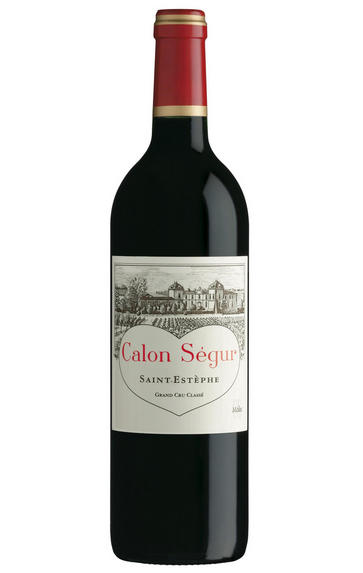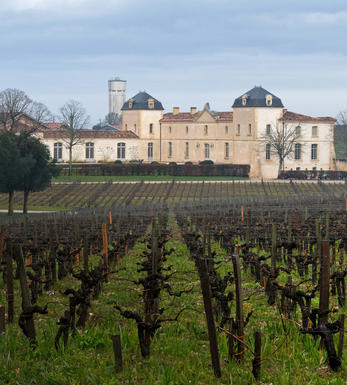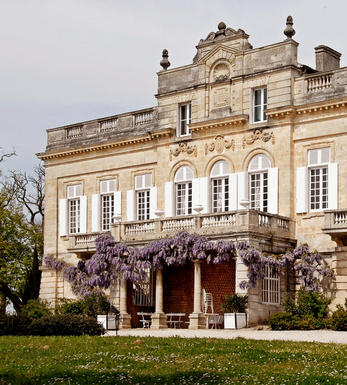
2010 Château Calon Ségur, St Estèphe, Bordeaux

Critics reviews
Robert M. Parker, Jr. - 28/02/2013
With 14% press wine all in new oak. Extremely deep purple. Really racy and energetic on the nose (compared to Montrose..?) and with great saveur on the palate. The press wine is a little evident at the moment. Very racy and fine and terroir-driven. No added sweetness. Neat and long and very authentic. No extremes; no complexes; no obvious trying? Winemaker Vincent Millet worked at Ch Margaux eight years which gave him, he says, the technique of working the Cabernet Sauvignon to gentle effect. He felt he could add finesse to the tannins.
Jancis Robinson MW- jancis robinson.com Apr 2011
This property has finally been sold to a syndicate involving a number of different elements, but given the greatness of this terroir, some fresh blood may ultimately push the quality of Calon Segur right up there with the likes of Cos d’Estournel and Chateau Montrose, the two reigning champions of this northern appellation.
Robert Parker- Wine Advocate- Feb 2013
A higher alcohol content (13.8% versus 13.4% in 2009), but lower pH (3.7 versus 3.9 in 2009) has resulted in a concentrated, textured wine that requires a decade of cellaring. It will keep for 35-40 years thereafter. The 2010 harvest at Calon Segur occurred between September 25 and October 14, and the final blend was 86% Cabernet Sauvignon, 12% Merlot and 2% Petit Verdot. A dense ruby/purple color is followed by notes of plums, kirsch, licorice, incense and herbs. Full-bodied, moderately tannic, pure, fresh and precise, this beauty will require lots of patience from prospective purchasers.
Robert Parker- Wine Advocate- May 2011
About this WINE

Chateau Calon Segur
Château Calon-Ségur, the most northerly of all the Médoc Grand-Crus Classés, is the château with a heart on its label. That is because the former owner, Marquis de Ségur, though he owned such Estates as Lafite and Latour, he declared "My heart belongs to Calon". For the last century it has been owned by the Gasqueton family.
Calon-Ségur's 74-hectare vineyard, which is partly enclosed by a wall, is located just to the north of the village of St-Estèphe. The vineyards (Cabernet Sauvignon 65%, Merlot 20%, Cabernet Franc 15%) lie on up to 5 metre deep gravel beds mixed with sand and, in parts, limestone and clay.
The wines are fermented for 3 weeks in enamel-lined steel vats and are then matured in oak barriques (40% new) for 18 months. Recently, Calon-Ségur has hit form with notable successes in 1995 and 1996 and 2000. At its best, Calon-Ségur produces meaty and concentrated wines displaying excellent depth of fruit and superb length. It is classified as a 3ème Cru Classé.

Saint-Estèphe
Saint-Estèphe is the northernmost of the most important communes of the Médoc and borders Pauillac on its southernmost border, with only a gully and stream separates it from Ch. Lafite. To the north lies the Bas-Médoc.
Saint-Estèphe is defined by the depth of its gravel, which is ubiquitous but of varying depths and occasionally very shallow, when clay predominates. This keeps the soil cooler and wetter than its counterparts so that the wines can appear fresh in lighter vintages, but superbly successful in hot, dry years.
The best châteaux in the south of the commune have the deepest soil and the thickest gravel. Cos d'Estournel has an exceptional terroir with its vineyards being located on a south-facing ridge of gravel with excellent drainage.
Saint-Estèphe is the least gravelly of main Médoc communes and in the north of the commune the vineyards are heavier and more clay-based leading to a rustic style of wine being produced.
The wines can appear austere in youth with a discernable ferric note at some châteaux, but the best typically display good depth of colour, pronounced acidity an tannins in youth and are exceptionally long-lived. At their best, they are the equal of almost any Bordeaux. The well-regarded St Estèphe co-operative controls the production of about half the appellation.
Recommended Châteaux
Cos (Ch. Cos d'Estournel), Ch. Montrose, Ch. Calon-Ségur, Ch. Lafon-Rochet, Ch. Les Ormes de Pez, Ch. Beau-Site, Ch. Cos Labory, Ch. Phélan-Ségur

Cabernet Sauvignon Blend
Cabernet Sauvignon lends itself particularly well in blends with Merlot. This is actually the archetypal Bordeaux blend, though in different proportions in the sub-regions and sometimes topped up with Cabernet Franc, Malbec, and Petit Verdot.
In the Médoc and Graves the percentage of Cabernet Sauvignon in the blend can range from 95% (Mouton-Rothschild) to as low as 40%. It is particularly suited to the dry, warm, free- draining, gravel-rich soils and is responsible for the redolent cassis characteristics as well as the depth of colour, tannic structure and pronounced acidity of Médoc wines. However 100% Cabernet Sauvignon wines can be slightly hollow-tasting in the middle palate and Merlot with its generous, fleshy fruit flavours acts as a perfect foil by filling in this cavity.
In St-Emilion and Pomerol, the blends are Merlot dominated as Cabernet Sauvignon can struggle to ripen there - when it is included, it adds structure and body to the wine. Sassicaia is the most famous Bordeaux blend in Italy and has spawned many imitations, whereby the blend is now firmly established in the New World and particularly in California and Australia.


Buying options
Add to wishlist
Description
Softer extractions were the key to success in the 2010 vintage and for that reason Calon-Segur wines have performed brilliantly. The tannins here are so wonderfully ripe and integrated you are hardly aware you are in St. Estephe.
Cool and fresh certainly, but with a softness and "liquid" feel on the mid-palate that's hard to describe but very welcome. Finishes with dancing complexity and persistence. Beautiful, classic Calon-Segur, with a long life ahead of it.
Philip Moulin, Fine Wine Team
wine at a glance
Delivery and quality guarantee